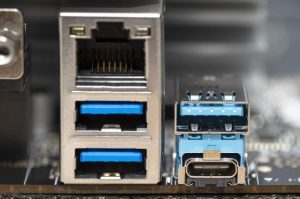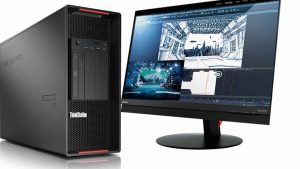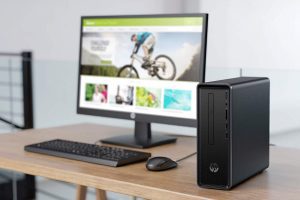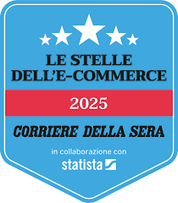Desktop computer, features, how to choose it, advantages and disadvantages
Despite the release of new formats and versions, the fixed computer or desktop PC always remains one of the favorite choices for those who are looking for a new PC or used computers.
The longevity of the desktop PC is easily explained, and is given by the advantages that this solution still brings for those who do not need mobile solutions.
The advantages of a desktop computer are in fact many and far outweigh the disadvantages of this solution.
But, let's go step by step…
What is meant by desktop computer?
As the name suggests, a desktop computer refers to a solution designed to be used in a single location. The desktop computer is usually made up of various parts, the case, the monitor, the keyboard and the mouse. In certain cases, (all-in-one PC) monitor and case are a single block.
The location of the desktop computer is multiple; we can in fact find it as an office desktop PC, home computer or professional station for graphic and video editing.
Characteristics and components of a desktop PC
Assuming a standard "fixed computer", we are therefore usually faced with four components. Two of them are quite simple, the keyboard and mouse have in fact the sole purpose of "transforming" our typing and movements into a signal shown on the monitor. The third component of the quartet is precisely the monitor, also available in numerous versions and customizations, which differ in screen size, "projection technology", resolution and any options and advanced features, such as the touchscreen.
It is on the fourth component of this set, the case, the container of the internal components, that the attention of those who intend to buy a new desktop PC or are evaluating used computers should be concentrated.
The case and its contents, the heart and brain of the desktop computer

The case contains all the parts that manage the machine's power supply, computing power, storage capacity, projected graphic image and much more.
Inside this "box" we find various components, which differ in power and capacity based on the use for which the desktop PC was designed.
Here are the elements that we commonly find "inside" the desktop computer :
The processor or CPU
Without a shadow of a doubt we can define the processor as one of the most important components of a computer. The processor is the central unit of a computer, the part that performs all the calculations behind every action performed by the computer itself. The modern processor is often a set of chips (hence the definition of dual core, quad core and so on) that work at a certain operating frequency, normally indicated in MHz.
Without going too technical, and remaining on standard, non-specialist use of the desktop computer, we can indicate as a decent machine one that is equipped with a quad-core and a frequency of 3 Ghz.
The video card or GPU
On "cheap" machines for "home" use the video card is often incorporated into the motherboard. However, when we plan to do graphic or video editing, play games or load graphically expensive applications with the desktop computer , a dedicated video card becomes mandatory.
Conceptually similar to the processor, the GPU is the unit dedicated to graphics processing.
 Hard Disk
Hard Disk
It is the fixed place that contains all the data that we upload or create on the desktop PC. The hard disk is usually composed of one or more mechanical hard-disks or an SSD solid-state disk; this space is dedicated to saving files and applications. When choosing the hard disk we will have to pay attention to two facts, one, often highly advertised and famous and the other a little less so.
The first of the two is the one that indicates the storage capacity of the computer, a value usually indicated in Gigabyte or Terabyte. Like any "storage area", the bigger the better, although, as always, having too much space inevitably leads to filling it up with "useless things".
The second factor, less renowned but equally important, is that of disk access speed. in this case we find large differences between the two types of hard disk.
The mechanical hard disk usually has a speed indicated in RPM (rotations per minute), a value determined by the maximum speed achievable by the disk and by the laser reader present in it.
The SSD hard disk, however, has no moving parts, being made with the same technologies already used for USB sticks. This makes this second disk faster and safer from the point of view of mechanical failures (since there are no moving parts). Being a more recent technology, this second type of hard disk obviously has a higher cost.
RAM memory
It is short-term memory, where all the information in use at a given moment is stored. The bigger it is, the better, since any other information that would not fit there would be kept on the hard disk, causing slow performance.
Motherboard
It is the electronic board that connects all the parts inside the case. As already indicated, it can incorporate some functions which in certain cases are delegated to external cards (typically video and audio functions). It is chosen based on its integration with the processor and the number of slots and ports you want to have.
Optical drives
CD, DVD, Blu Ray players, electronic components that are somewhat obsolete in some ways given the speed of transfer and download and the low cost of USB sticks and portable hard disks, can still be very useful in certain cases. Also because the purchase cost of them is now truly minimal.
USB and HDMI ports
Many of the former, at least one of the latter. The USB port is a communication standard used almost universally by many external peripherals (from mice to keyboards, from pen drives to portable hard disks, up to the most disparate options). This is why we should make sure we have many of them, and at high speed, in order to make the best use of our computer without necessarily having to use external multipliers.
HDMI port, at least one, in order to connect our desktop PC to external screens, televisions and other advanced systems.
power supply
Another fundamental part of the computer, its switching on and correct functioning depends on it. It is usually calibrated according to the motherboard and processor, always leaving a certain "safety" margin to support any cards added at a later time.
Operating system
The only non-physical component of the case but normally present since the creation of the PC, the operating system is software (usually Windows for PCs) which takes care of the execution of startup operations and the programs and applications installed on the desktop computer .
In addition to these basic components, there are many other alternative electronic boards and ports dedicated to specific applications or functions.
Types of desktop computers
It's easy to say desktop computer and in the collective imagination it is usually identified with the desktop PC, but in the desktop computer category we find different types of machines:
Desktop PC uses
As can be seen from the categories above, the desktop PC can be used for many different uses, from the basic one in which it is used only for checking e-mail and Internet browsing to the more advanced and specific ones.
Advantages of the desktop computer
The "standard" fixed computer can be modified and upgraded easily, the fact that it is not a machine to be moved continuously allows for more generous dimensions which also guarantee better air circulation and cooling of the components.
Disadvantages of the desktop computer
Obviously the dimensions and the fact that it is not "easily movable" are a disadvantage of this choice. Another disadvantage of these solutions, unlike notebooks, is the lack of batteries and systems that allow you to work and save your files even in the absence of electricity. If necessary or for greater security, it is still possible to add an uninterruptible power supply (or UPS) to the desktop PC.
Used desktop computers, are they worth it?
The flexibility given by the structure of a desktop computer makes the purchase of used desktop computers very interesting. Unlike other configurations and given the professional use for which these machines are designed and created, investing in a robust and easily upgradeable machine at a good price is not an impossible task.
To conclude
The desktop computer, in its main desktop PC configuration or in each of the alternative configurations available on the market, is an excellent choice, both for those targeting the new market and for those looking at used computers.










